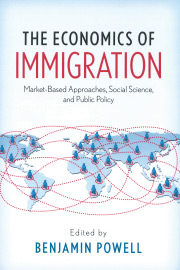Wal–Mart is a lightning rod that attracts petty tyrants who attempt to limit the choices of their neighbors. The latest lighting strike occurred in San Diego when the city council voted to essentially ban Wal–Mart Supercenter stores. If implemented, such a ban would be bad for San Diego’s economy and its consumers.
The council’s 5–3 vote prohibits all stores larger than 90,000 square feet, which use 10 percent of their space to sell groceries and other merchandise not subject to sales tax. The ordinance’s main targets, of course, are Wal–Mart’s Supercenters, which average 185,000 square feet. While Wal–Mart has 21 such stores in California, none are located in San Diego yet.
Why ban Wal–Mart’s Supercenters? According to Auday Arabo, president of California Independent Grocers and Convenient Stores, Wal–Mart undercuts small mom–and–pop businesses. Although this claim is made often, academic research casts some doubt on it. In 2001, Michael Hicks and Kristy Wilburn published a study in the Review of Regional Studies that examined the effect of Wal–Mart stores in West Virginia. They found that contrary to popular belief, the entrance of Wal–Mart into a community actually led to an increase in the number of retail establishments and an increase in total retail employment. After taking into account other jobs lost because of Wal–Mart’s entry, they found that in the long run on net 54 jobs were added in counties where Wal–Mart opened a new store.
How could this be? Although competition from Wal–Mart may put some small retailers out of business, other businesses that complement rather than compete with Wal–Mart are sometimes better able to open shop. In the end, the competition Wal–Mart brings to a community causes some retailers to innovate and offer better products and services, and simultaneously remixes business opportunities by encouraging the closing of some stores and the opening of others.
In an exercise in political doublespeak, San Diego councilman Tony Young, who voted for the superstore ban, stated, “I believe that we should support small businesses and thriving businesses.” Of course if a business is thriving, it does not need political prohibitions on competitors such as Wal–Mart to survive. Instead, it would need only to maintain the demand for its products by consumers. If Young would like to support small businesses he can do it as all consumers could, by spending his dollars in those stores he supports. He need not impose his will on others by robbing them of their freedom to choose.
Unfortunately, the city council has opted to impose on the rest of the community its own vision of what choices consumers should have. Councilman Young illustrated the arrogance of these planners when he stated, “I have a vision for San Diego and that vision is about walkable, livable communities, not big, megastructures that inhibit people’s lives.” But what about other people’s visions and desires for products? Why should the council be able to impose their vision on others?
The appropriate way to answer these questions is through the voluntary process of the market, where consumers are free to patronize or not patronize stores of their own choosing. In a free market, the stores that come into existence and survive are those that best correspond to consumers’ preferences: the diverse mix of stores by size, location, prices, and types of goods and services reflects the collective vision of countless consumers, who vote with their dollars. Prohibitions, such as the one the San Diego Council passed, don’t create good communities; instead, they impose the vision of the “few who know best” on the thousands whose visions are not allowed to be expressed.
Wal–Mart’s size and success are a testament to its success in serving the needs of consumers. If the City Council’s ordinance is ultimately approved, San Diego’s consumers will ultimately be the ones who suffer.











